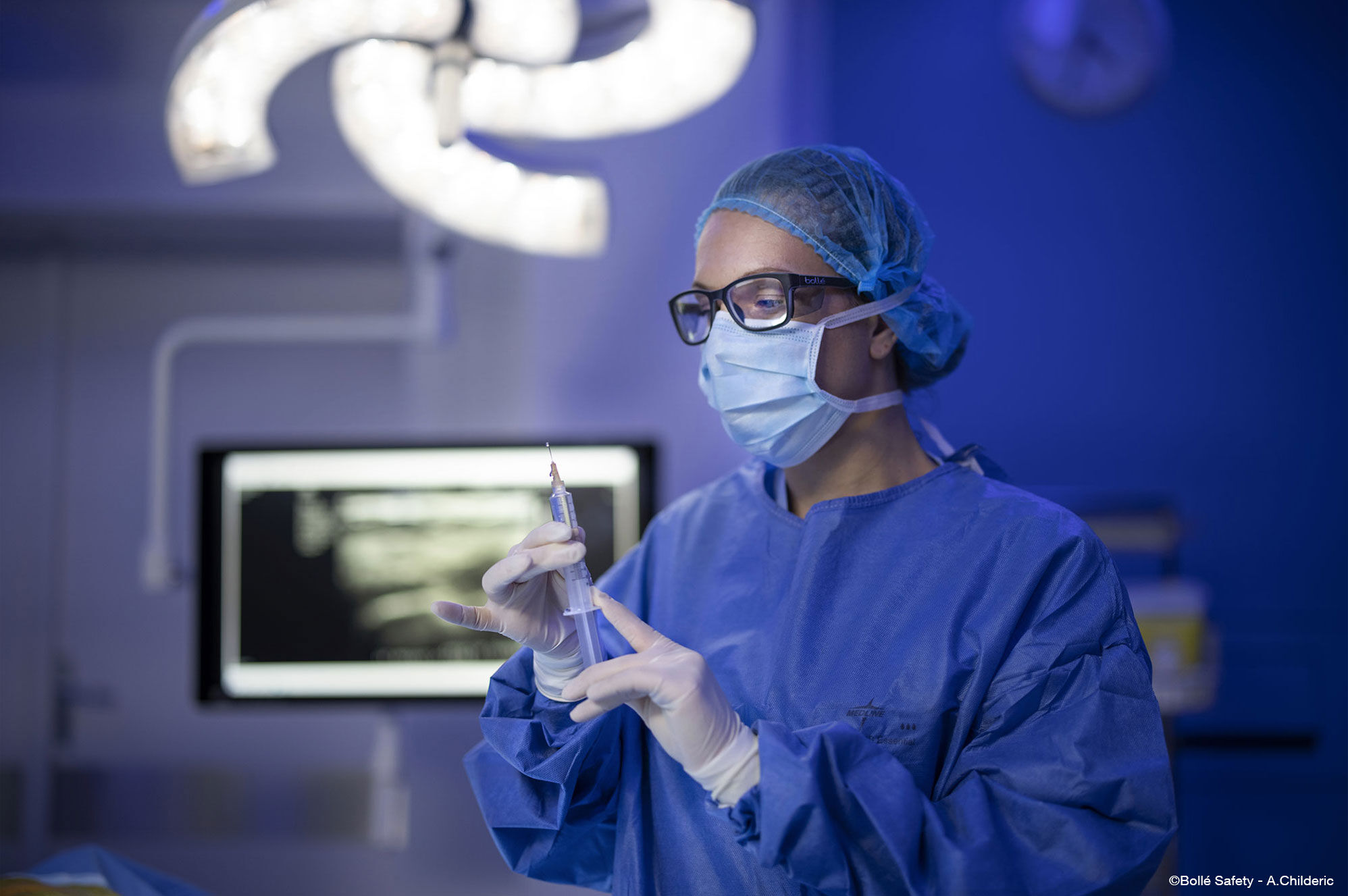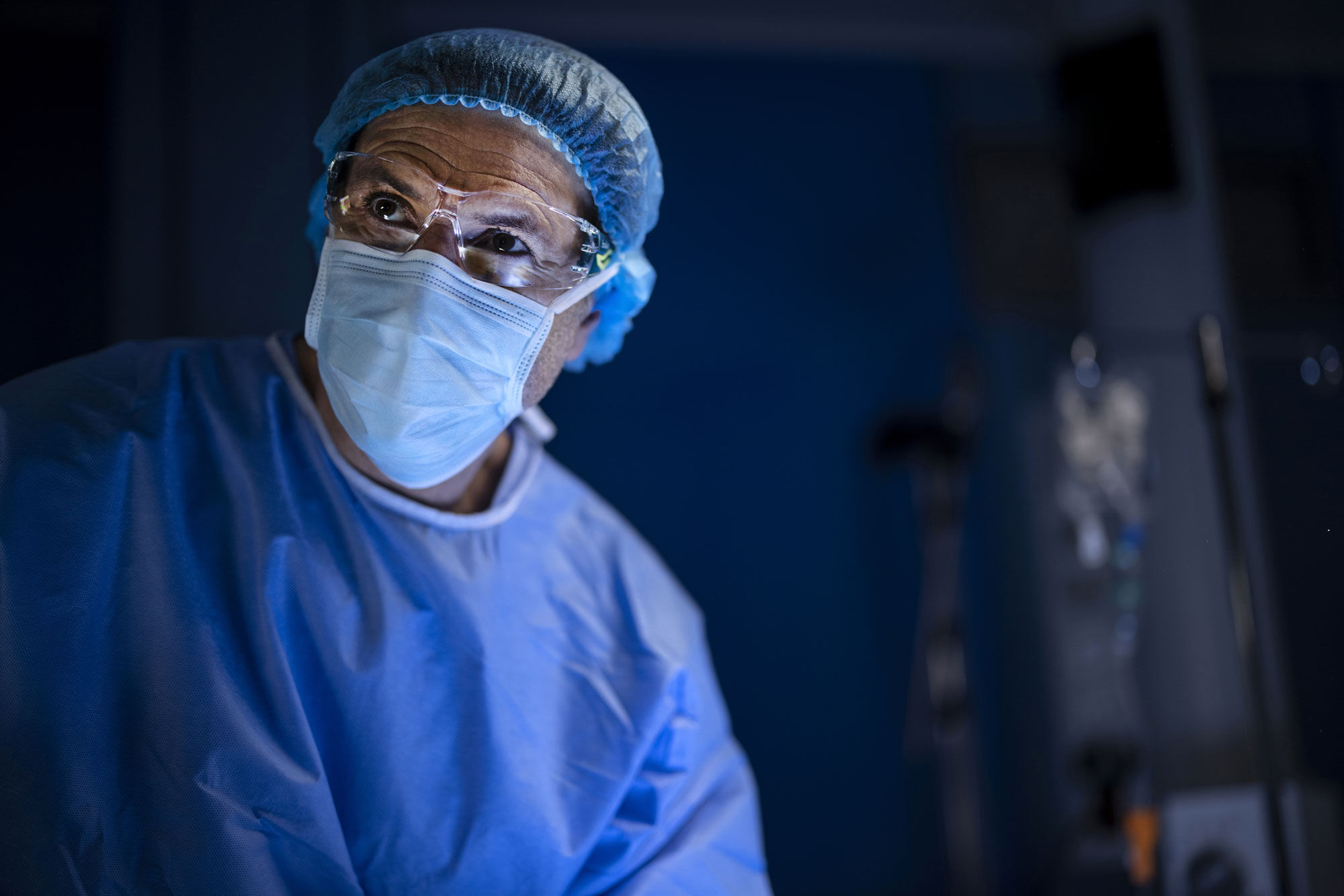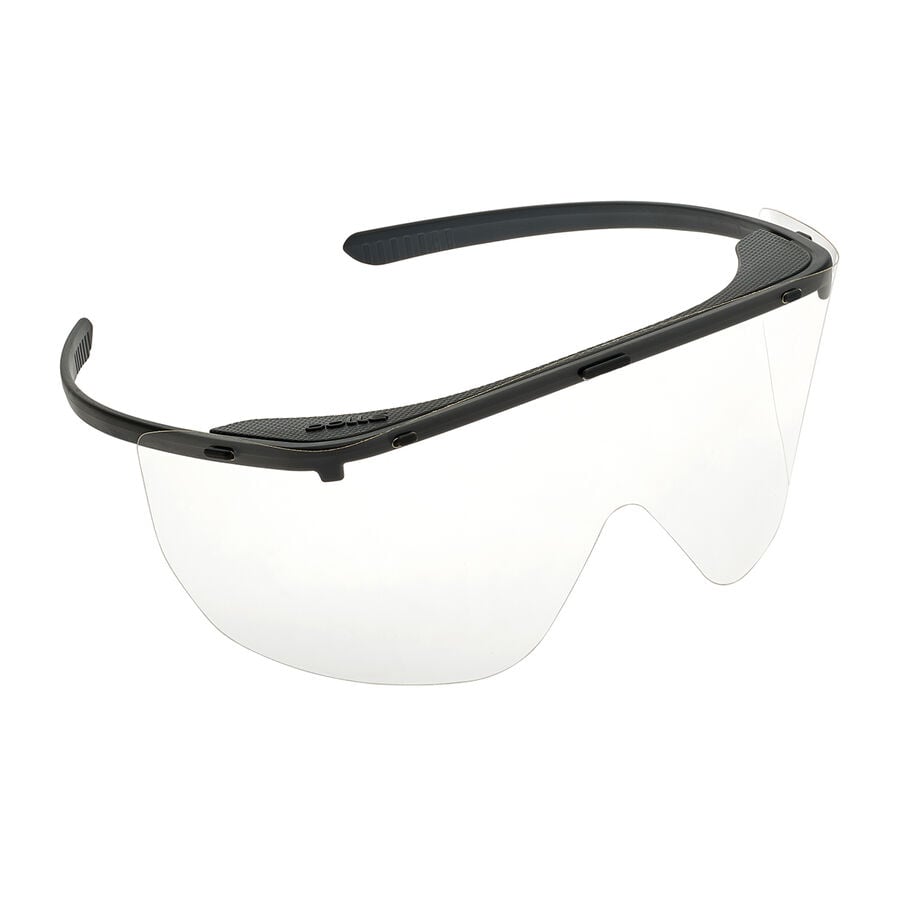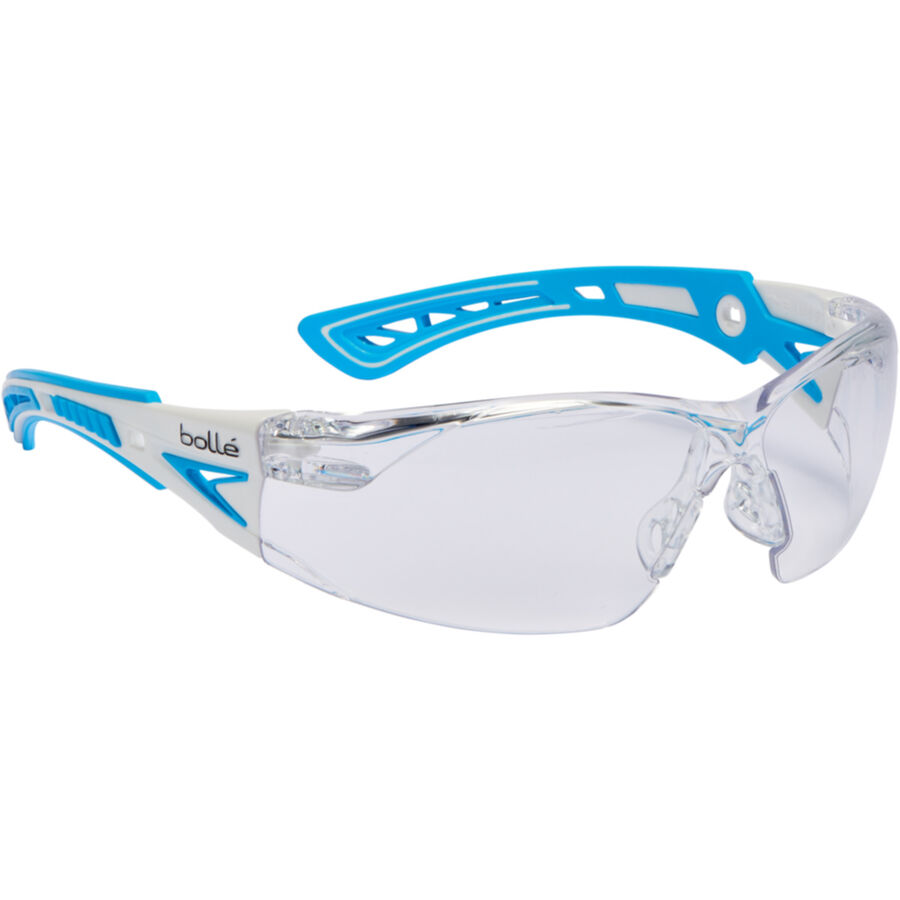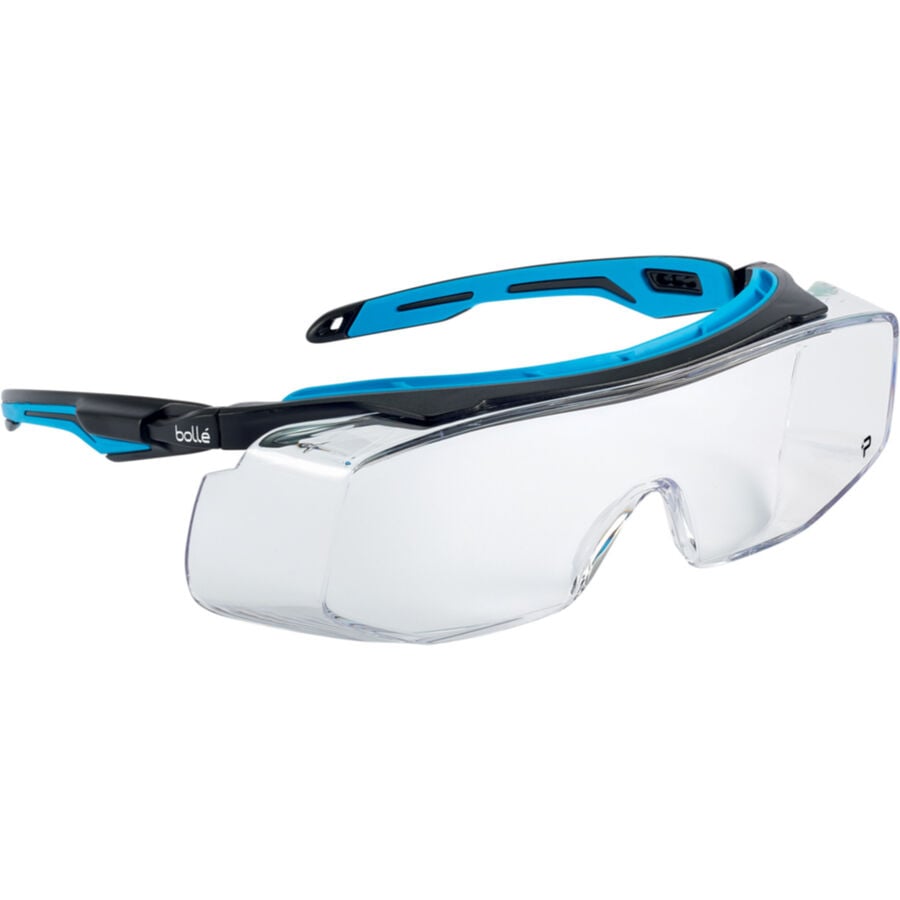Working in a healthcare environment can be stressful, tiring, and at times, dangerous. Every day at work, healthcare workers’ (HCWs’) eyes are at risk of being exposed to infectious droplets, like COVID-19, harmful chemicals, bodily fluids, and splashes. All this might lead to Eye injuries and irritations.
The World Health Organization has confirmed that the SARS-COV-2 virus causing COVID-19 can enter our body via our eyes, through liquid particles in the air from an infected person, or by touching a contaminated surface and then the eyes. Another research has raised concerns about the ocular complications caused by SARS-CoV-2 virus. The reported ocular manifestations varied greatly and included dry eye, itching, blurring of vision, conjunctivitis, chemosis, and photophobia.
It is currently recommended that all HCWs working with COVID-19 patients or in areas with moderate to substantial community transmission should wear eye protection, such as goggles, safety glasses, or face shields. Depending on the type, safety eyewear provides different levels of ventilation, ease of communication, and protection against the SARS-COV-2 virus.
Protective eyewear developed in response to COVID-19
Bollé Safety has developed a range of safety eyewear in response to the COVID-19 pandemic. Innovative solutions were adapted to each profession, from admitting clerks to nurses, home-care workers to surgeons, and depending on the person’s required level of protection.
The healthcare line features safety glasses including prescription glasses, goggles, and face shields. Innovative anti-fog technology is key to having a good vision while wearing PPE all day. Anti-scratch properties are also essential as scratched lenses can lead to headaches, eye strain, and fatigue due to distorted vision.
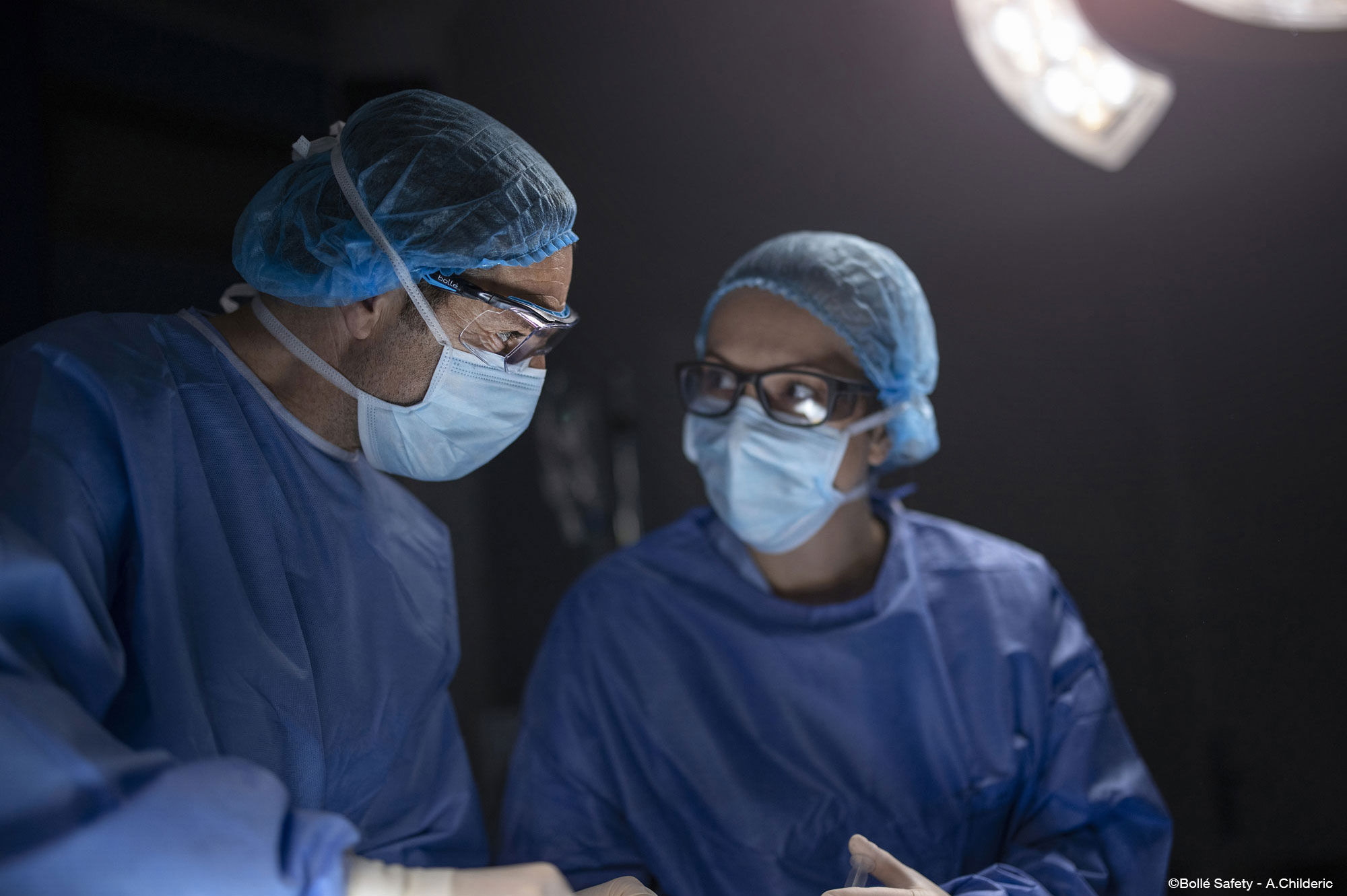
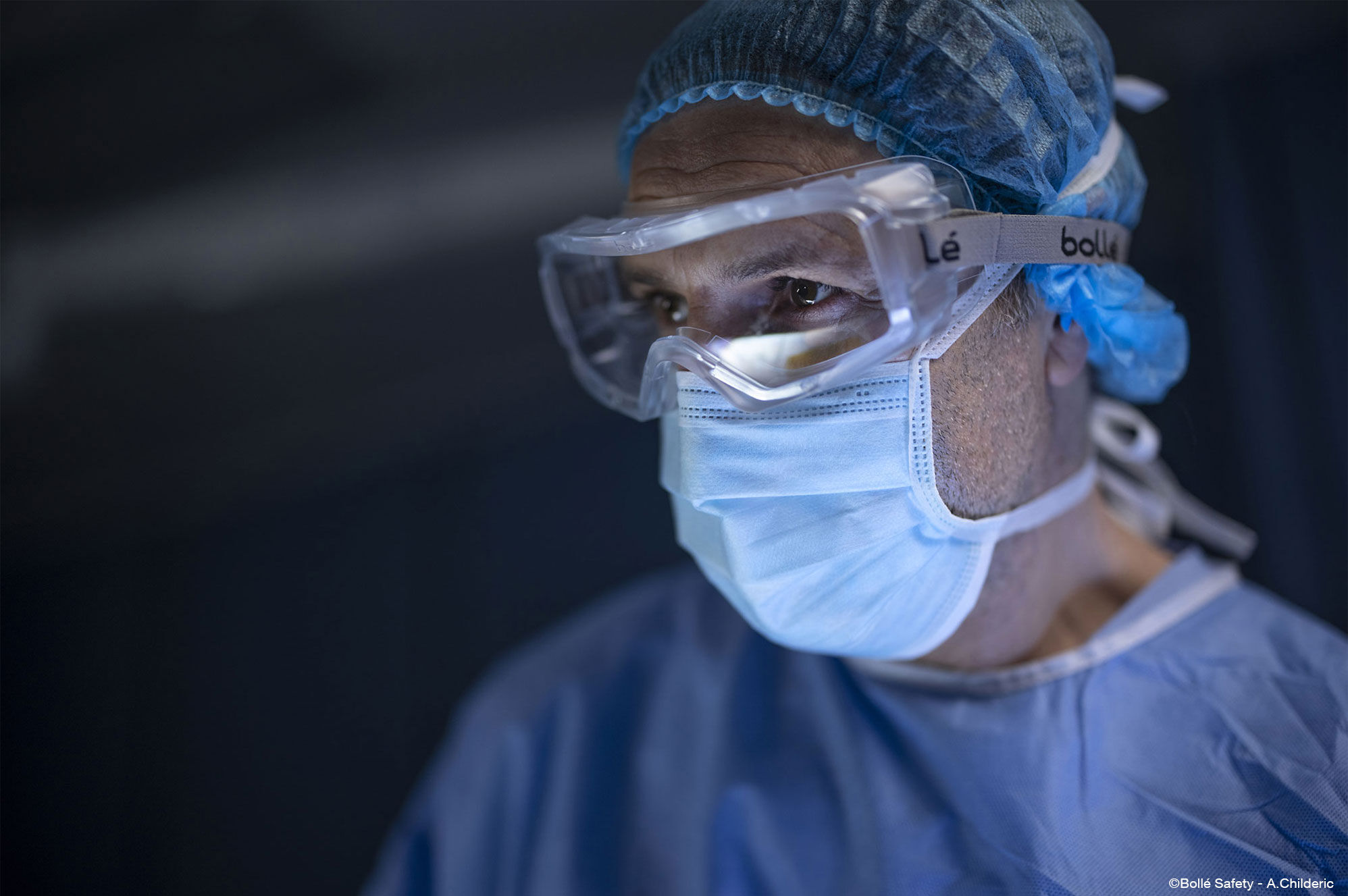
Safety goggles
Safety goggles are the leading choice for infection control, protecting the eyes against droplets containing the COVID-19 virus and other hazards, and are recommended by experts working in healthcare. While working in a poorly ventilated area, goggles provide a high level of protection against airborne particles where the concentration of the virus might be higher. Goggles also reduce the risk of autoinoculation by preventing the wearer from touching their eyes.
“Wearing the whole set of PPEs is very uncomfortable. I have difficulty breathing and feel very hot and my heart rate speeds up. We keep on sweating and the clothes are soaked”, said one Chinese HDC in The Lancet Global Health study. "The effort staff made for the patients, even though they were uncomfortable, overall was remarkable really", one nurse said in Frontline HCWs’ experience with PPE during the COVID-10 pandemic in the UK review.
Safety and comfort first! Safety goggles should be both protective and comfortable. Uncomfortable goggles cause pressure points, which leads the wearer to remove them to make adjustments or leave them off, leading to lower PPE compliance.
The front surface of the goggles is likely to be the most contaminated and shouldn’t be touched when doffing PPE. In order to prevent cross-contamination, safety goggles should be removed by pulling off by the back strap (from behind the head). After that, they should be placed in a separate container for reprocessing.
Goggles come in both sealed and indirect ventilation formats. Anti-scratch and long-lasting anti-fog protection coating ensure clear vision and comfortable protection throughout the shift.
Sealed goggles
Sealed goggles provide a complete seal around the eyes, conforming to the user's face. Hermetically sealed eye protection prevents droplets from entering the air mass in front of the eye. Not only do they protect the eyes from the COVID-19, but also from impacts, flying debris, and bodily fluid, essential for everyday ER environments.
Indirect ventilation goggles
Indirectly vented goggles have angled vents that face away from the front lens. These allow for the goggles to be well ventilated, which reduces fogging. Due to their reverse facing vents, it is significantly harder for any material to reach the wearer’s eyes during use. Indirect ventilation is the optimum protection of the user's eyes from splashes and particles.
Face shields
Face shields provide a barrier of protection to the entire face and the mucous membranes that COVID-19 particles can enter -- the eyes, nose, and mouth. A study researching the efficacy of face shields against aerosol cough droplets found that a shield blocks about 10 times more fine particles than a surgical mask.
One of the benefits of face shields is that they protect the entire face, including the eyes, which along with the nose and mouth can be a gateway for the coronavirus and other germs to enter the body. There is no impact on breathing resistance, less retained dermal facial heat, and fit testing is not required. Wearers also do not need to be clean-shaven.
Shields are classified as adjunctive personal protective equipment, as they generally are not worn on their own, but in conjunction with other PPE such as a mask, goggles, glasses, or cap. Wearing a face shield combined with safety goggles provides the maximum level of eye protection against the SARS-COV-2 virus.
For optimal protection, the face shield must fit snugly on the user’s head, without any gaps between the shield and forehead. They should extend below the chin and cover the face to the ears. Lightweight and adjustable they should also keep the HCWs comfortable on long journeys.
In situations where HCWs need to speak to patients that may be elderly and hard of hearing or young children, face shields provide ideal protection. Being able to see a person’s mouth and facial expressions while they are talking allows for better communication and care.
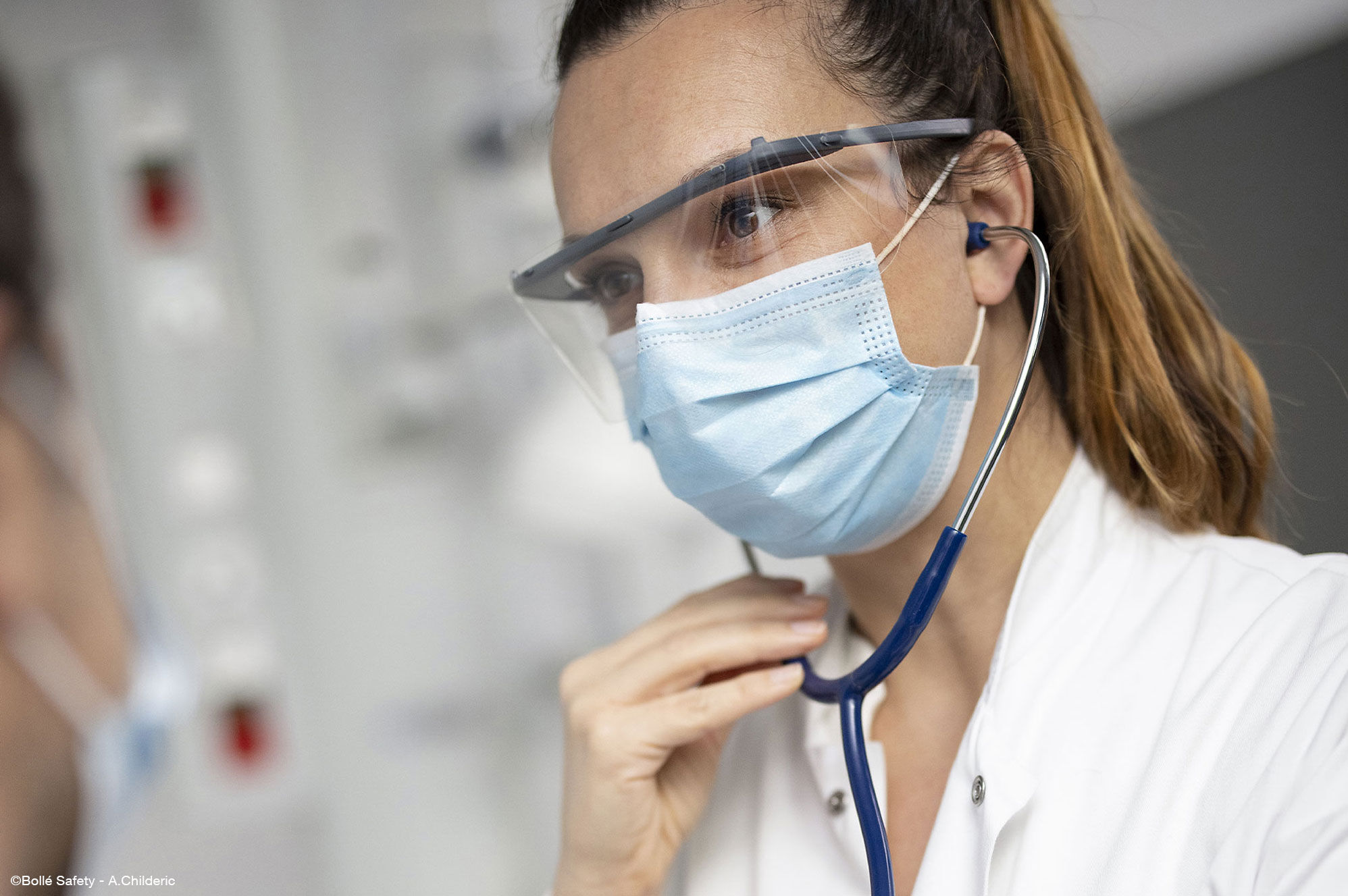
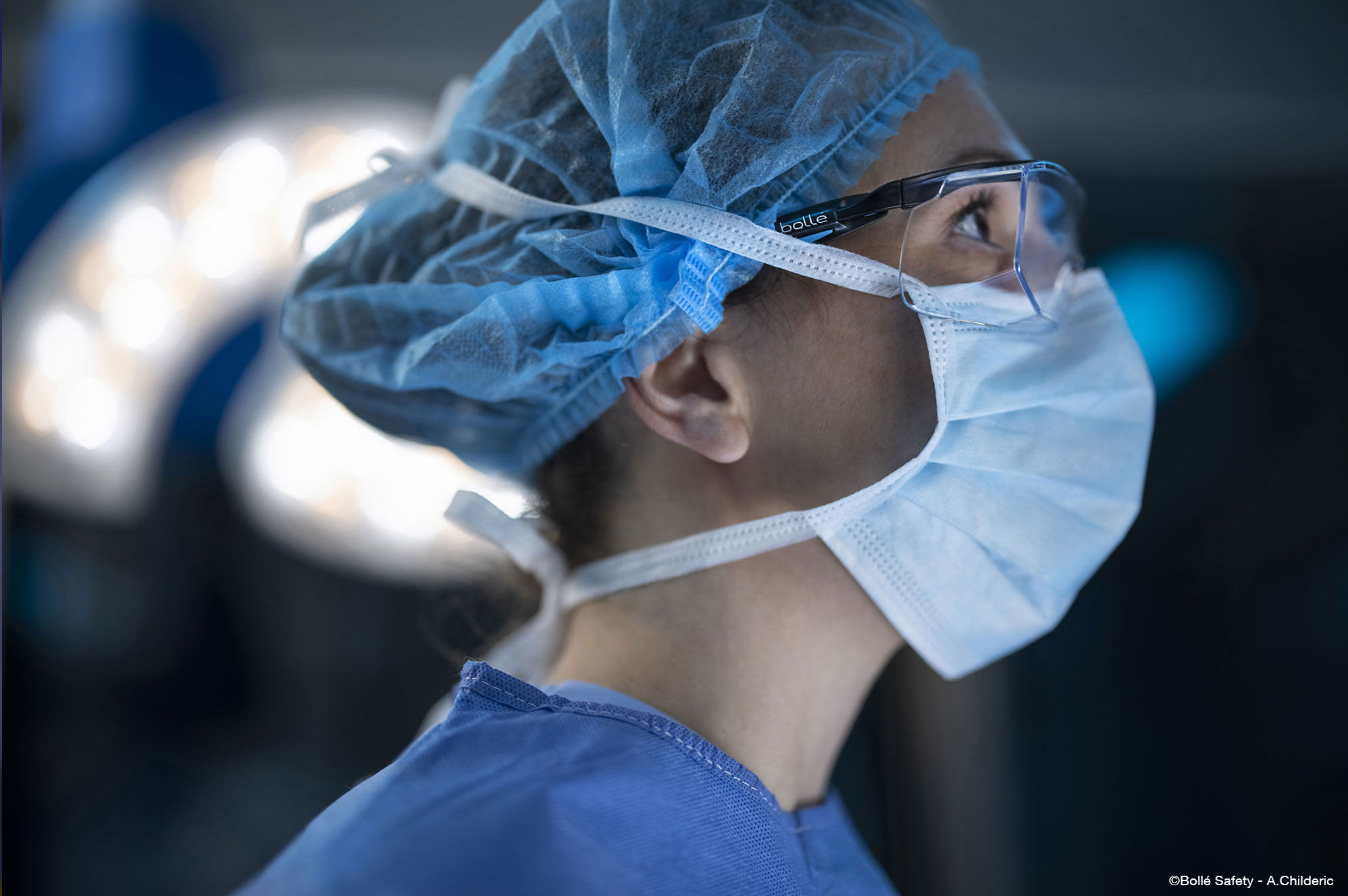
Protective glasses
Safety glasses are primarily designed to protect against high-velocity impact and exposure to radiation and chemicals. Protective glasses create a physical barrier between eyes and the environment but do not provide the same level of droplet and splash protection as goggles or a face shield. Glasses should fit closely to the face, with not too much of a gap between their frame and skin.
Safety eyewear is adaptable to all users, even those with poor vision. Safety glasses can fit a vision prescription, including bifocals and for astigmatism. Prescription protective glasses are ideal for people who need precision in their vision -- such as surgeons, anesthesiologists and pharmacists. Safety glasses can also fit over prescription glasses and anti-blue light technology helps those HCWs spending lots of time on computers or under intense artificial light.
Eyewear solutions based on your needs
Protection and comfort are essential for HCWs on the frontline of the COVID-19 pandemic, no matter if they have poor vision, face fogging issues, or are exposed to blue light. The eye safety technology is here so HCWs can rely on their PPE to stay as efficient as possible and concentrate on saving lives
